
Tips to Teach Sequencing Skills in Children
What does Sequencing mean?
Sequencing is an important skill in children and this article holds key tips to improve verbal language sequencing skill in children. Sequencing is the process of combining things in a particular order; a following of one thing after another. In the context of speech and language, sequencing refers to a skill that we use to discover the components of an event and break it down into simple steps such as the beginning, middle and end of an event.
It also refers to the ability to align thoughts, language and knowledge or information and actions in a certain order and retrieve it to complete a given task. The task could be verbal, written and manual or a combination of these. As I am writing this article, I am thinking about the sequence in which I should align information. So, it is an important life skill.
Sequencing is dependent on cognitive skills such as working memory (executive function), attention, auditory and visual processing, receptive and expressive language skills. These skills are prerequisites for following multiple commands, retelling a story or an event, summarising information, understanding Science experiments and Maths computation which follow rigorous procedures.
Children who have difficulty in sustaining attention may get distracted and not remember the steps involved in an activity. Others may have working memory issues, resulting in difficulty recalling information. Without a good recall, children may struggle academically. The ability to process the sequence of sounds is a key skill in learning to read. Children with poor auditory processing skills or visual processing skills may struggle with comprehension, reading, writing and other areas. Children with delay in receptive and expressive language skills also demonstrate poor sequencing as they may lack vocabulary and find it difficult to understand instructions with words such as ‘under’, ‘on, or ‘who’, ‘where’ etc.
How can you help?
Appropriate help can significantly improve the skill of sequencing and impact performance in your child. The more you understand the reason for your child’s sequencing problems, the better you will be able to help him/her. The first step is to get a comprehensive evaluation by a paediatric neuropsychologist and a speech language pathologist/therapist.
Improving sequencing skills
Start early: Toddlers exhibit sequencing as early as 2 years by learning to speak putting two words together. They begin to string words in the correct sequence such as ‘Mumma milk’, ‘daddy go’ etc. Hence it is important to start early if you notice that your child is unable to string words in the right order.
- Modelling grammatically correct sentences is imperative in demonstrating the right order of words. Make use of the countless opportunities throughout your daily routine to boost this skill. Use the words ‘first’, ‘next’ and ‘last’ to highlight the sequence of actions involved in an activity.
- Involve your child in tasks that involve small steps throughout your daily routine and use gestures or signs to help them process the language you use with your child.
- Action songs are a great resource to practise sequencing in a fun way.
Vocabulary: It is a prerequisite skill to understand and express using language. Hence, before working on sequencing, work on building age appropriate vocabulary.
- Target teaching a vocabulary of nouns, verbs, location words and adjectives that is functional to your child. Choose words from his favourite activities and daily routines.
- Once your child has adequate vocabulary to carry out activities of their interest and daily living, you can focus on helping your child expand their language by adding more words.
Prompts to aid processing: Use visual prompts to aid your spoken language. This will greatly benefit children who have auditory and visual processing difficulties. Use signs, gestures and facial expressions to highlight the key words in your message/instruction. Use ‘acoustic highlighting’ which means increase the pitch and loudness of key words. With older children, you can use written prompts such as ‘First/Firstly’, ‘Next’ ‘Then’ and ‘Lastly’.
When and how much?
Often and for less duration at a time works best for any child. Try to integrate these activities in your daily routines and also work one on one with your child without any distractions around for about 10 minutes at a time.
Activities at a glance
- Play a sound of an animal or a vehicle. Let your child listen to the sound and after 2-3 seconds, ask your child ‘which sound did you just hear’? Depending on the child’s level, you can make it more challenging by playing two sounds A & B and ask your child to recall which sound they heard first and second.
- Pictures of the sound source or written prompts can be made use of to give an easy start.
- Sign two actions in a sequence and ask your child to observe you closely. For example, sign pouring water into a glass and drinking it. After 2-3 seconds, ask your child to recall the actions in that sequence.
- Sing a rhyme or a song with actions. Pause and ask question related to the previous line. For example, if you sing ‘Little Peter rabbit had a fly upon his nose…’, ask your child what was on Peter rabbit’s nose?
- Play ‘Simon says’ and give one step instructions to your child. Once your child is able to follow one step instructions work your way up to adding one step more.
- Picture Recall: Show your child a picture of a ‘car’ and put it away in a box. Ask your child to recall the picture.
- Read a Story: If your child can comprehend ‘who’, what’, ‘where’ and other ‘Wh’ questions, read a short story to your child and ask questions such as ‘Where did the bear live in the story’? and so on.
- Blend dance and singing into speech and language activities as dance involves several small steps.
- Involve your child in cooking and help your child through various steps. You can have visuals with instructions to help your child.
- Watch a TV programme and once you turn off the TV, you can help your child recall the events/story of the programme you watched together.
All the above activities strengthen attention, working memory (immediate recall), receptive and expressive language skills. Auditory and visual processing difficulties can be compensated by using visual reminders such as written prompts or visual calendars and schedules.
Here are some photo cards I have created and a few picture illustrations from New Wave Educational Resources that can be printed and used to practise the skill of sequencing :
The above picture illustrations are from New Wave Educational Resources
Break it down into parts and put them all together hierarchically!
Let us know your thoughts and experience with practising the skill of sequencing.
- Nonverbal Autism - December 22, 2022
- Spectrum of Hope: The New Normal - April 29, 2018
- Preschool Children’s Speech and Language Development: 2 to 6 years - April 16, 2018

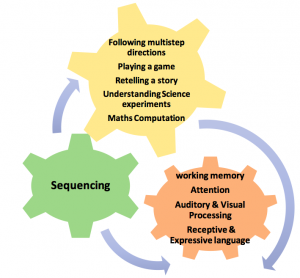

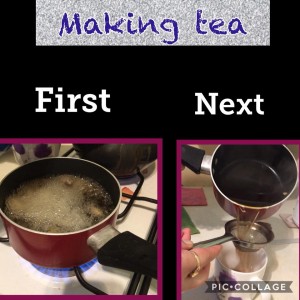


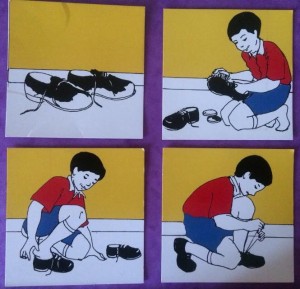
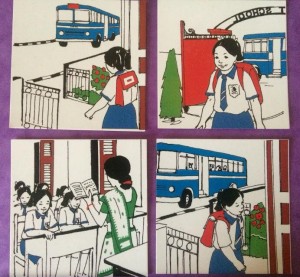
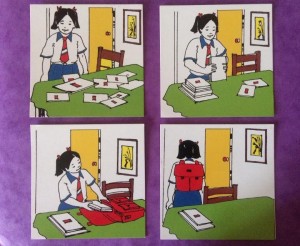
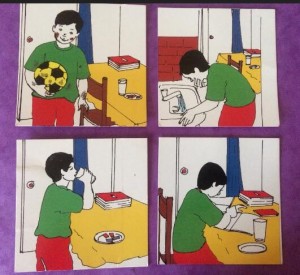
Leave a Comment
(3 Comments)
Great tips! My children are currently learning this at nursery/school so it’s great to have some tips on how to support that!
Thank you Laura, glad you can relate it to your children’s learning at school.
Thanks! these are very useful…
Categories
Recent Posts